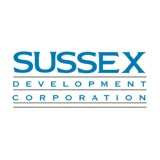Information
-
Audit Title
-
Client / Site
-
Conducted on
-
Prepared by
-
Location
-
Personnel
Focus Four Hazards (These cause 90% of all fatalities)
-
1.1. Fall Hazards
-
1.2. Caught-in or -Between Hazards
-
1.3. Struck by Hazards
-
1.4. Electrical Hazards
1. Job Information
-
1.1. OSHA 300 form posted and complete? (Posted between 02/02 and 04/30.)
-
1.2. State and Federal Safety &Health posters posted?
-
1.3. Weekly Safety Meetings up to date?
-
1.4. Hazard communication up to date and accessible?
-
1.5. First aid kit up to date and accessible?
2. Housekeeping
-
2.1. General neatness of work area?
-
2.2. Projecting nails removed or bent over?
-
2.3. Waste containers provided and used?
-
2.4. Passageways and walkways clear?
3. Fire Prevention
-
3.1. Adequate fire extinguishers, checked and accessible?
-
3.2. "No Smoking" posted and enforced near flamables?
-
3.3. Extra fire extinguishers at fuel tanks or hazardous work areas?
4. Fall Protection
-
4.1. Safety rails and cables are secured properly? Cables flagged?
-
4.2. Employees using personal fall protection equipment? ( harnesses, etc.?)
-
4.3. Employees exposed to fall hazards are properly tied off?
-
4.4. Employees below protected from falling objects?
-
4.5. All guard rails and handrails installed?
5. Hand and Power Tools
-
5.1. Hand tools inspected regularly?
-
5.2. Guards in place on tools and machines?
-
5.3. Right tool being uses for the job at hand?
-
5.4. Powder actuated tool users are licensed?
-
5.5. Operators wearing appropriate protective equipment?
6. Ladders
-
6.1. Ladders are not damaged and in good working order?
-
6.2. Ladders are positioned safely?
-
6.3. Ladders properly secured? (Extended minimum 3 feet above landings.)
-
6.1. No step at top two rungs of stepladder?
7. Scaffolding
-
7.1. All scaffolding inspected daily by a competent person?
-
7.2. Scaffold competent person designated in writing?
-
7.3. Erected on sound, rigid, foundation?
-
7.4. Tied to structure as required?
-
7.5. Guardrails, intermediate rails, toe boards, and screens in place?
-
7.6. Planking is complete, sound, and sturdy?
-
7.7. Proper access provided?<br>
-
7.8. Employees below protected from falling objects?<br>
8. Floor and Wall Openings
-
8.1. All floor or deck openings are planked over or barricaded? ( Labeled?)
-
8.2. Perimeter protection is in place?
-
8.3. Deck planks and opening covers are secured
-
8.4. Materials are stored away from edge?
9. Trenches, Excavations, and Shoring
-
9.1. Competent person is on hand and designated in writing?
-
9.2. Excavations are shored, benched, or sloped back?
-
9.3. Materials are stored at least two feet from trench?
-
9.4. Equipment is a safe distance from edge of trench or excavation?
-
9.5. Ladder provided every 25 feet of trench?
10. Material Handling
-
10.1. Employees using proper lifting methods?
-
10.2. All operators properly licensed?
-
10.3. Materials are properly stored or stacked?
-
10.4. Tag lines are used to guide loads?
-
10.5. Proper number of workers for each operation?
-
10.6. Are slings and rigging in good condition?
11. Welding and Burning
-
11.1. Gas cylinders stored upright?<br>
-
11.2. Proper separation between fuels and oxygen? (Minimum 20')
-
11.3. Burning/welding goggles or shields are used?
-
11.4. Fire extinguishers are nearby?
-
11.5. Hoses and welding leads are in good condition?
12. Cranes
-
12.1. Outriggers are extended and swing radius barricade in place?
-
12.2. Operator is familiar with load charts?
-
12.3. Crane operator's logs exist and is up to date?
-
12.4. Employees are kept from under suspended loads?
-
12.5. Chains and slings are inspected and tagged as required?
-
12.6. Hand signal charts are on crane?
13. Electrical Hazards
-
13.1. Minimum 12 gauge extension cords being used?
-
13.2. Cords with bare wires or missing ground plugs removed from service?
-
13.3. All temporary circuits GFI protected?
-
13.4. Terminal boxes equipped with required covers?
14. Concrete/ Masonry
-
14.1. Employees are protected from cement (Silica) dust?
-
14.2. Exposed skin covered?
-
14.3. Runways are adequate?
-
14.4. Walls over 8' are supported?
-
14.5. Has mason installed a limited access area in front of walls being erected?
15. Personal Protective Equipment
-
15..1. Hard hats are being worn?
-
15.2. Safety glasses are being worn when needed?
-
15.3. Dust masks are being worn when required?
-
15.4. Hearing protection is being worn when requires?
-
15.5. Traffic beats being worn when required?
Corrective Actions
-
Enter any corrective actions that will be undertaken
Sign Off
-
Superintendent/ Auditor
-
Auditor's signature- (If other than superintendent)







